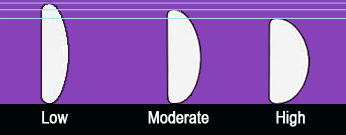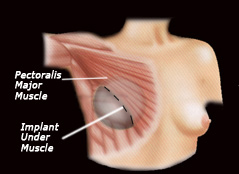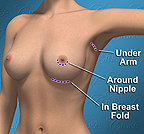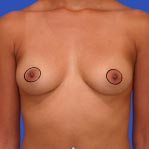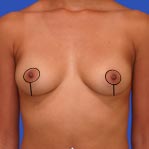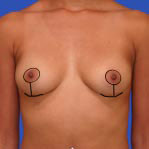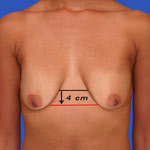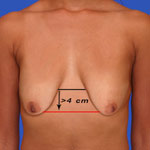Dr Cruises Philosophy
Dr Cruises Philosophy
Joseph T Cruise, MD’s philosophy regarding Breast Enlargement
Breast Augmentation Information Resource for Southern California including Orange County, Los Angeles, Newport Beach, San Diego, and Beverly Hills.
- Overview
- Common incisions
- Are you a good candidate?
- What do you want to change?
- Benefits
- Silicone breast implants
- Joseph T Cruise, MD’s philosophy
- Physical exam
- FAQ’s
- Prior to surgery
- Anesthesia
- After the procedure
- Recovery time
- Possible complications
- Capsular contracture
- Breast augmentation
before and after
The beauty of breast augmentation is not only the dramatic results that it creates but also its predictability. Patient satisfaction in an experienced plastic surgeon’s hands is very high. The key to having successful breast augmentation for a woman is to find a plastic surgeon who has experience and will take the time to find out exactly what look she is seeking. This is not as simple as it may seem. There are many variables that must be taken into consideration by you and your plastic surgeon. In this section I will go over my thought process so that it may guide you in achieving the look you want to obtain.
I have broken the process into categories that I take into consideration during every breast augmentation consultation:.
- Size
- Shape
- Profile
- Implant Placement (Above or Below the Muscle)
- Location
- Incision
- Silicone Implants Vs. Saline Implants
- Asymmetry
- Excess Fat near Arm Pits or Lateral Breast Roll
- Tuberous Breasts
- Breast Sag
1. Size
One of the biggest reasons why breast augmentation patients have to be revised is because the wrong implant size was used. Therefore, it is critical to make sure that you know what you want and that this is conveyed to your plastic surgeon. You should feel comfortable that your surgeon and patient coordinator went over in depth what size you want to be. This is more difficult than it may seem as the same implant will have a completely different look on two different women. In addition, cup sizes are misleading as they vary significantly between different brands.
It is key that your plastic surgeon has an accurate process to determine your proper implant size. At Cruise Plastic Surgery, we have dramatically reduced the guess work by devising a bra sizing system. This system accurately demonstrates what the various size implants will look like on you while you look at yourself in a mirror. It gives you the chance to see what each particular implant size looks like on you. We will put the bra on you and let you stand in front of a mirror. You then can see what your new breasts will look like. Ideally, you will bring along a significant other or close friend to help you make this decision. Our patient coordinators will help you out with the process and give you their experienced opinion. This is done at the time of consultation.
Often, the patient does not know what is best for her until she sees it on herself by bra sizing. This has really worked well for us. Other methods may work as well. Once again, it is important that you feel your plastic surgeon truly understands what you are looking for when you leave your consultation.
2. Shape
To me, shape is the most over-looked part of breast enlargement. This is especially surprising considering how important it is. During my consultation, I ask all my patients what shape do we want to achieve in the upper part of the breast. I divide it into three options. Natural, “California” Natural, and Dramatic.
- Natural
Natural means a straight or even a slightly concave upper part of the breast. This is what you would find in a youthful, non-augmented breast. It is full, but does not look like it has been augmented. It is ideal for someone who does not want anyone to know she has been augmented but still wants to have a sexy, more proportionate shape to her breasts.
- “California” Natural
I coined the term “California” Natural to describe women who want to have full upper breasts slightly rounder than natural but do not want to be too dramatic. Before I created this intermediary category, these woman would say they wanted to be “natural.” Living in California, our perception of “natural” is slightly skewed to a fuller look than what natural really is. These women want a slightly rounded shape to the upper breast without a “shelfy” look. The “California Natural” breast has a slight convexity to it. It can look very natural in loose clothing but can look dramatic in a push up bra.
3. Profile
I purposely placed profile directly under shape because profile has a significant effect on shape. There are three different types of profiles; low, moderate, and high.
For the most part, I utilize moderate profile as I feel it does the best job of obtaining the right size and shape. Low profile is ideal for patients who want a smaller implant (i.e. below 350cc) and want to be as natural as possible. In fact, I do not even call it “low” profile as I prefer the name “natural” profile.
I use high profile implants on patients who want to go quite large (i.e. above 600cc). In these women, moderate profile implants would be too wide to fit on their chest without spilling over into the arm region.
Their is a difference in shape between saline and silicone. For a given volume, silicone will have a more natural shape in the upper breast. For this reason, saline implants tend to look bigger even though the volume is the same. This can be minimized by not filling the saline implants to the top of their fill volume. This gives a more natural appearance. Under filling too much, however, increases the risk of rippling.
With silicone implants, I am more likely to choose high profile implants if the women wants the “California Natural” or more dramatic look. You should always remember that more projection means less width and less width may mean a bigger gap in the midline. Conversely, the low or “natural” profile saline implants create an almost silicone type appearance. This is ideal for the woman who wants a natural look but does not want silicone implants.
4. Implant Placement (Above or Below the Muscle)
Lets first define what we mean by above or below the muscle. The muscle we are talking about is the Pectoralis Major muscle. It runs along a diagonal from the chest to the shoulder.
Good results can be obtained above or below the pectoralis major muscle. I strongly believe, however; under the muscle provides the best results for several reasons. The most important reason is that it lowers the chance of capsular contracture or “hardening of the implant.” The muscle acts as a constant massager of the implant – helping to keep it soft. From an aesthetic standpoint, it has several advantages. It acts as a buffer giving an added layer of implant coverage. This is especially helpful in the upper part of the breast. The muscle diffuses the implant over a greater area preventing a “shelfy” and overly round appearance. In addition, placing the implant under the muscle significantly decreases the chance of rippling except along the lateral part of the breast where the pectoralis major muscle does not exist.
As you can see, the entire lateral part of the implant is uncovered even when the implant is placed under the muscle. To provide better coverage, I have developed a unique way of putting the implant under another muscle along the lateral chest wall to almost completely cover the entire implant. This muscle is called the serratus anterior. This is why my saline implants rarely having rippling.
In addition to providing valuable coverage, the Serratus Anterior also prevents the implant from migrating into the arm pit. Furthermore, this muscle pushes the implant toward the midline giving enhanced cleavage. Think of it a a book shelf preventing the implants from sliding outward.
5. Location
Location describes where the implant is placed on the breast. Most women, when given the choice, prefer the implant to be as close to the midline as possible. This provides better cleavage and prevents the implant from falling out laterally toward the armpit. To accomplish this I put the implant under the Serratus Anterior muscle. Plastic surgeons, however, must be careful not to place them too close too midline as this can cause symmastia and/or visible rippling.
Another aspect of location is how high to put the implant. A great example of this is women who have a small amount of sag. Here, it becomes useful to place the implant slightly lower so that it gives the breast the appearance of a breast lift. This is done by completely releasing the Pectoralis Major and Serratus Anterior muscle at its lowest point. This is called a “Dual Plane” implant placement. Dual plane means that the lowest part of the implant is actually not under muscle. Here, the fold below the breast is lowered slightly. Care must be taken to not lower it too much as this can create a “bottoming out” appearance.
muscle coverage
Pectoralis Major Muscle covers half of the implant. It prevents the implant from descending.
Dual Plane – Notice how inferior part of muscle has been released allowing implant to go slightly lower.
6. Incision
The three most common locations for breast augmentation incisions are the axilla, the areola, and the infra-mammary fold.
All 3 incisions can provide excellent results.
- The incision along the margin of the areola allows for very accurate implant placement. The scar becomes almost imperceptible within 2 months in most women.
- The incision within the fold at the bottom of the breast can provide equally good results. But, it does not have the advantage of a darker color for the incision to hide within. Also this incisions tends to remain redder for a longer period of time than the peri-areolar incision.
- The axillary incision also can provide a great result but implant placement is more difficult because the implant is being placed from a remote location.
I utilize both the areola and the infra-mammary incision depending on the situation. I prefer the areola incision as the darker color of the areola hides the incision extremely well and is hard to see even in the early healing stages. I use the infra-mammary incision in women who want silicone implants but have areolas smaller than 4 cm. Remember, silicone implants require a larger incision than saline implants. The infra-mammary incision is often the better choice in women who already have a moderate amount of breast tissue. In these women, the incision is well hidden by the breast tissue and it provides a more direct route for implant placement.
A fourth option for the incision is through the naval. Some plastic surgeons use this incision but the results when compared to the standard incisions are not as predictable. This is because it is impossible to visualize the pocket where the implant will be placed. For this reason I, and most plastic surgeons, no longer perform breast augmentation via this approach. This is not to say that this incision cannot produce good results. It is just that the results are less predictable.
7. Silicone Implants Vs. Saline Implants
This is usually a decision I leave up to patient. I merely provide the facts. The facts are both implants can provide a great result. Many plastic surgeons strongly recommend silicone because it has a lower rate of rippling. This is not so true in my practice as rippling is not very common. I believe this is because I put the implant under both the serratus anterior and pectoralis muscle.
Silicone Implant
Saline Implant
Simply put; silicone implants have a more natural feel. So I tell my patients, “If a natural feel is very important to you, go with the silicone.” Another advantage of silicone is that it produces a more natural appearance to the upper part of the breast. Some people want this natural look others want a more full look, i.e. “California Natural.”
Still, it possible to create a “California Natural” look with silicone by going with a high profile implant. A high profile silicone implant creates a shape similar to a moderate profile saline. A moderate profile silicone implant creates a upper breast shape similar to a low or “natural” profile saline implant.
The major advantage of saline is that if it ever ruptures the saline simply gets flushed out of the body. Silicone, on the other hand, will stay in place. Sometimes, it is hard to tell if a silicone implant has ruptured as it maintains it shape relatively well.
In summary, go with silicone implants if you want the most natural feel and the most natural shape. Go with saline implants if you are concerned about the effects of silicone gel or want a more dramatic look.
I should point out that women who already have a fair amount of breast tissue do not necessarily need silicone implants. They already have enough tissue to obtain a natural feel even with saline implants. On the flip side, women with almost no breast tissue should seriously consider silicone as they do not have much coverage at all. Saline implants in these women would look much less natural than silicone.
8. Asymmetry
Asymmetry is important to point out as virtually every woman has some degree of it. The key is to determine what is causing the asymmetry and correct it as much as possible. Complete correction of asymmetry is not possible. The three most common asymmetries involve a) nipple height, b) infra-mammary fold level, c) breast volume.
- Nipple Asymmetry. Typically, I do not treat discrepancy in nipple position unless there is a greater than 1.5cm difference between the two breasts. When the difference is 1.5cm or greater this difference will become apparent when a tight shirt is worn and the nipple location is clearly visible. In this case I recommend a donut breast lift to even out the nipples. See the section on Breast Lift.
- Infra-Mammary Fold Asymmetry. The infra-mammary fold is the crease at the bottom of the breast. When there is a difference of IMF height it can make the breast look asymmetric. This often can be easily corrected by lowering the higher of the two IMF’s during the breast augmentation procedure.
- Breast Volume Asymmetry. Most differences in breast volume will not be noticeable after augmentation even if the same implants are used on both sides. In fact, I try not to use different sized implants as this can actually create asymmetry especially within the upper breast. The reason for this is that putting a bigger implant in the smaller breast may improve the volume asymmetry but will create breasts with two different shapes. When the volume difference is great than two different sizes are necessary. In this case, I usually recommend silicone so that the difference in shape of the upper breast is minimal.
9. Excess Fat near Arm Pits or Lateral Breast Roll.
Fat deposits around the breast are important to discuss during consultation as it has a big impact of the overall look. The two most common areas that are a problem are the axilla and the lateral breast roll. Liposuction of these two areas can easily be done at the same time of breast implantation. I must warn you that concomitant liposuction will make the breasts bruise and swell more than breast augmentation alone. It is certainly worth it as most women who have these two fat deposits have grown to really despise them.
Examining these areas shows that the plastic surgeon is looking at the entire breast area and not just the breast itself. If these areas bother you, be sure to point them out to your plastic surgeon if he does not do so himself.
10. Tuberous Breasts
Tuberous breasts are breasts that have not fully developed especially along the lower part. This causes the bottom of the breast to look tight and constricted instead of a full and round . Tuberous breasts often have a very short distance for the bottom of the areola to the infra mammary fold. This distance should be at least 5 cm.
Often, women with tuberous breasts do not realize that this is abnormal. They may feel ashamed of their breasts which may prevent them from seeking help. Fortunately, breast augmentation can significantly help this condition. This is especially satisfying to me as the results can be dramatic.
11. Breast Sag
I saved this topic for last as it encompasses many things. It is explained in greater detail within the Breast Lift section. It is, however, important to talk about it so that you understand what is necessary to create the beautiful breasts that you are looking for. I understand your concern about putting scars on your breast. I take this into consideration as we decide together what is best for you. The truth is, if you have significant sag, a proper breast lift with augmentation is far superior to an augmentation alone. In fact, an augmentation alone may give you a very elongated, older appearing breast. This has been given the nickname “rock in a sock” look. What we are looking for is a lifted, round appearance seen in a youthful breast.
Patient treated with breast augmentation alone who really needed breast augmentation in conjunction with breast lift. The surgeon placed the implants very low to avoid lift. In reality this created a very elongated, older appearance of the breast and significantly shorter abdomen.
In the example above if the surgeon did not place the implant low it would have created a “double bubble” appearance. When a lift is necessary breast augmentation alone is not going to provide you with the look you want.
“Double Bubble” (also known as “Snoopy Dog Deformity”) Example of breast that needed a breast lift with augmentation but was treated with augmentation alone. S
The most important thing is, and I can not stress this enough; find a plastic surgeon with considerable experience with this procedure. Breast lifting with augmentation is very challenging as there are many variables going on all at once.
When evaluating sag, the entire breast along with patients wishes need to be taken into consideration. To make things as simple as possible, I will discuss the two most important considerations. They are not absolute measurements. These are the 1) relationship of the nipple to the Infra-mammary Fold (IMF) and 2) the relationship of the bottom of the breast to the IMF. Other factors, of course, will need to be discussed at the time of consultation.
Before we get started, it is important to point out that breasts with more natural tissue are more likely to need a lift. This is because the bottom of the breast will continue to fall. To remedy this, removing this breast tissue with a lift will correct the sag and actually lessen the chance of sag in the future.
Another consideration is the size of the implant. A bigger implant will provided more lift. This makes sense as more volume will fill the excess skin envelop more adequately. Of course, you should not go with a larger implant for this reason as the amount of lift that an implant can provide is limited.
Doing a breast lift alone rarely produces a great result as usually there is very little breast tissue in the upper chest. This can only be adequately treated by augmentation. Even patients with significant breast tissue usually benefit from the upper breast fullness created by an implant. In these cases, I usually will remove all the undesirable sagging breast tissue and put in a relatively small implant to create an attractive upper breast with cleavage.
There are four common breast lifts; augmentation alone, augmentation with donut lift, augmentation with Lollipop lift, and augmentation Anchor Lift.
- Augmentation Alone
Once again, this will depend on the size of the implant. Usually, augmentation is all that is necessary when the nipple is above the level of the IMF and the bottom of the breast is no greater than 2 cm below the IMF. This is especially true when there is not much breast tissue. Heavier breasts require more to lift them.
- Donut Lift
The Donut lift is also known as the peri-areolar lift. It involves removing skin in the shape of a circle around the areola and placing a suture within this circle. This circular suture acts as a purse string to tighten this bigger circle into a smaller circle. This elevates the nipple into a higher position.
One misnomer is that the donut lift is more of a nipple lift than a breast lift. This is because it does not really lift sagging breast tissue that has dropped greater than 2 cm below the IMF. It does however, elevate the nipple. It is ideal for the breast that has minimal sag and not much tissue.
Good candidates for the Donut Lift have a nipple that is at or slightly below the IMF and the bottom of the breast no more than 2-3 cm below the IMF.
- Lollipop Breast Lift.
This type of breast lift involves an incision around the areola and straight down the bottom of the breast. Patients often do not want this lift because they do not want the vertical incision. This incision, if properly placed by an experienced plastic surgeon, is quite acceptable. Truth is, if it is necessary it is a far better procedure than the donut lift as it actually removes the hanging breast tissue. Further sag in the future is dramatically reduced or prevented.
Candidates for the Lollipop breast lift are women with nipples greater than 2 cm below the IMF and the bottom of the breast greater than 3 cm below the IMF.
- Anchor Lift
The Anchor lift is quite similar to the Lollipop lift except that it has an additional incision that falls within the IMF. This extra incision is necessary to remove excess skin from breast sag. The horizontal incision within the IMF is actually not visible in a standing position and is quite hard to see.
Candidates for the Anchor lift are women whose breast tissue falls significantly below the IMF. Whether or not this horizontally skin removal is necessary depends on many things. If the bottom of your breast is greater than 6 cm below the IMF a horizontal incision will be necessary.
The length of the horizontal incision depends on how far the bottom of the breast fall. For example, a breast 10 cm below the IMF will need a longer horizontal incision than one 6 cm below the IMF.
This woman has nipple descent 4 cm below the IMF and breast descent 5 cm below IMF. Most likely, she will need a breast augmentation with Lollipop breast lift.
This woman has nipple descent greater than 4 cm below the IMF and breast descent greater than 6 cm below the IMF. She, most likely, will need an Anchor lift.
I know this is a tremendous amount of information but, believe it or not, I condensed it down as best as I could. I know this information is important to you. It always surprises me how much my patients understand as long as the information is presented to them in a easy to understand fashion that makes sense.
It is your job to understand the material as best as you can. It is my job to understand the fine nuances that go far beyond the scope of this presentation. This is where the art and science of plastic surgery come together and make it all worth while.
Breast Augmentation Information Resource for Southern California including Orange County, Newport Beach, Los Angeles, San Diego, and Beverly Hills.




